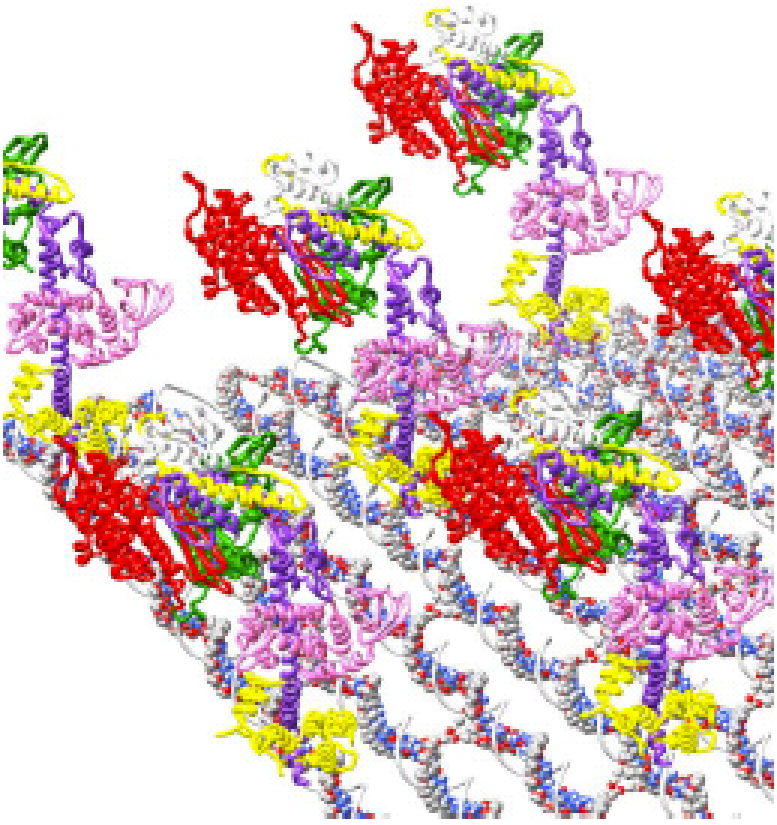
Dr. Rebecca E. Taylor
Associate Professor, Mechanical Engineering, Biomedical Engineering, and Electrical and Computer Engineering
- Wean Hall 1319
- 412 268 3348
Wean Hall 1319
Carnegie Mellon University
5000 Forbes Avenue
Pittsburgh, PA 15213
Education
- B.S.E., Mechanical Engineering, Princeton University, 2001
- M.S., Mechanical Engineering, Stanford University, 2010
- Ph.D., Minor Bioengineering, Stanford University, 2013
- Ph.D., Mechanical Engineering, Stanford University, 2013
Bio
My research and teaching focus on design and advanced manufacturing across scales. Since 2016 my group has utilized structural nucleic acid nanotechnology to create nanoscale biosensors and actuators that can interface with condensed matter as well as molecular and cellular biosystems. In addition, I am inspired by the heart, whose contractile function is derived from exquisite structure at the molecular level up through the tissue level. To enable the creation of dynamic, engineered systems with structure across multiple scales, my group employs self-assembly methods with structural DNA nanotechnology to augment and extend existing top-down microfabrication strategies. My teaching centers on the fundamentals of mechanical design as well as advanced topics in large-volume manufacturing as well the emerging design and validation methodologies for structural DNA nanotechnology. In both my research and teaching, I investigate DNA as an engineering material, and I aim to equip my students with the tools to utilize self-assembly as a powerful tool for advanced manufacturing. My research requires highly interdisciplinary groups of scientists and engineers, and, for this reason, my group collaborates with researchers in fields including Chemistry, Biomedical Engineering, Physics, Developmental Biology and Cardiovascular Medicine.
Research
My research is focused in three primary domains: (1) DNA nanotechnology for molecular and cellular mechanobiology, (2) Bio-inspired Micro- and Nanosystems and (3) Advanced Manufacturing.
Area 1. DNA nanotechnology for molecular and cellular mechanobiology. The application of atomic force microscopy and fluorescent molecular tension sensing in biomechanics has enabled the visualization and quantification of nanometer-scale displacements and piconewton-scale. We are leveraging the unique capabilities of structural DNA nanotechnology to create tools for measuring stress and strain in soft materials (supported by AFOSR YIP), investigating molecular and cellular mechanobiology of the endothelial cells lining the vasculature (collaboration with Xi Ren, BME) and platelets circulating in the blood (supported by an NIH R21 in collaboration with Marvin Slepian in BME and Cardiovascular Medicine at the University of Arizona). We are investigating novel approaches for targeting DNA nanostructures for drug delivery and gene therapy and the creation of DNA nanotechnology-augmented microfluidics platforms capable of reporting real-time wall shear stress (collaboration with Philip LeDuc).
Area 2. Bio-inspired Micro- and Nanosystems. As engineers, we are inspired by the robustness and programmability of nucleic acids, and we are interested to extend the capabilities of nucleic acid nanotechnology. A notable contribution from my lab is the creation of self-assembling nanofilaments from building blocks of a synthetic DNA mimic called gamma-modified peptide nucleic acid (gPNA). We demonstrated that unlike DNA-based nanostructures these structures form and remain stable in harsh environments like aprotic organic solvent mixtures. With the support of my NSF CAREER award, we are investigating the use of gPNAs in the creation of bio-inspired materials for dynamic nanotechnology with unique bioorthogonality, solution stability and resistance to enzymatic degradation.
Area 3. Biomanufacturing and Nanomanufacturing. With my background in product design, microelectromechanical systems (MEMS), molecular reconstitution assays, and DNA origami, my work spans the macro-, micro-, and nanoscales. Building on this multidisciplinary foundation, my group is working to address the advanced manufacturing challenges that will enable the combination of both top-down engineering processes with bottom-up engineering processes. For example, we have recently shown that DNA-based nanostructures can serve as flexible connectors for microscale swimmer robots, whose locomotion and swimming speeds can be tuned by connector geometry and mechanics. We are using DNA origami as a bridging material for enhancing existing self-assembly processes and for facilitating next-generation nanoscale and microscale fabrication efforts. We are also developing and utilizing workforce training tools like voice assistants that can expedite the mastery of new skills in advanced manufacturing.
Research Interests: microsystems; nanotechnology; DNA origami; biomechanics; nanobiosensors

Awards and Recognitions
- NSF CAREER, 2020
-
AFOSR YIP, 2017
- Donald L. and Rhonda Struminger Faculty Fellow, 2016